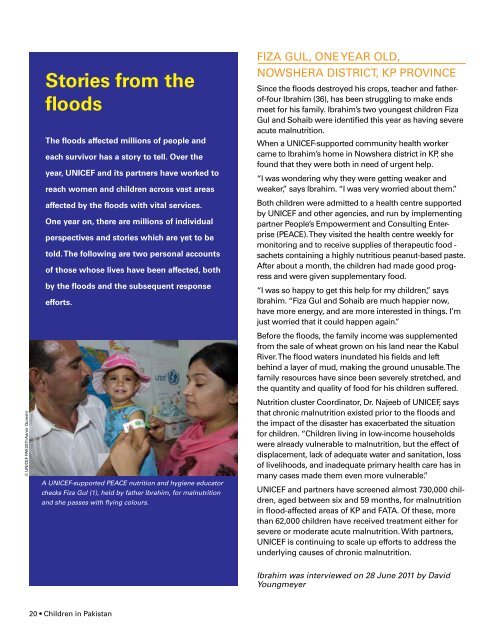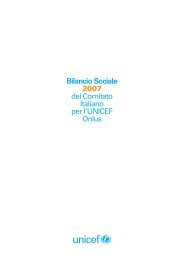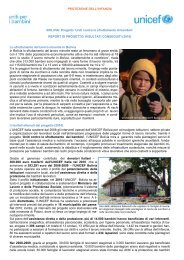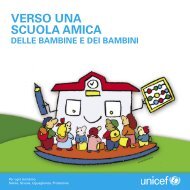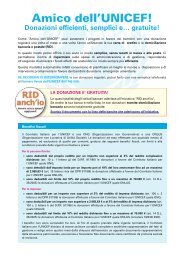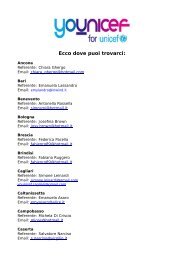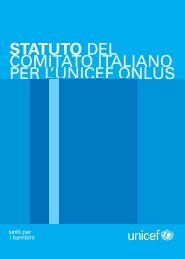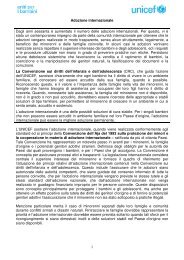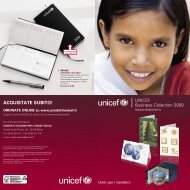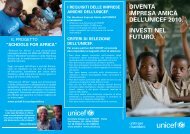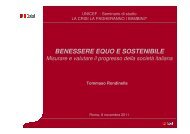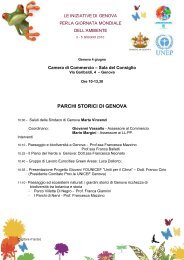Pakistan 1 Year Report - UNICEF Humanitarian Action Resources
Pakistan 1 Year Report - UNICEF Humanitarian Action Resources
Pakistan 1 Year Report - UNICEF Humanitarian Action Resources
You also want an ePaper? Increase the reach of your titles
YUMPU automatically turns print PDFs into web optimized ePapers that Google loves.
© <strong>UNICEF</strong> PAK2011/Aamir QureshiStories from thefloodsThe floods affected millions of people andeach survivor has a story to tell. Over theyear, <strong>UNICEF</strong> and its partners have worked toreach women and children across vast areasaffected by the floods with vital services.One year on, there are millions of individualperspectives and stories which are yet to betold. The following are two personal accountsof those whose lives have been affected, bothby the floods and the subsequent responseefforts.A <strong>UNICEF</strong>-supported PEACE nutrition and hygiene educatorchecks Fiza Gul (1), held by father Ibrahim, for malnutritionand she passes with flying colours.FIZA GUL, ONE YEAR OLD,NOWSHERA DISTRICT, KP PROVINCESince the floods destroyed his crops, teacher and fatherof-fourIbrahim (36), has been struggling to make endsmeet for his family. Ibrahim’s two youngest children FizaGul and Sohaib were identified this year as having severeacute malnutrition.When a <strong>UNICEF</strong>-supported community health workercame to Ibrahim’s home in Nowshera district in KP, shefound that they were both in need of urgent help.“I was wondering why they were getting weaker andweaker,” says Ibrahim. “I was very worried about them.”Both children were admitted to a health centre supportedby <strong>UNICEF</strong> and other agencies, and run by implementingpartner People’s Empowerment and Consulting Enterprise(PEACE). They visited the health centre weekly formonitoring and to receive supplies of therapeutic food -sachets containing a highly nutritious peanut-based paste.After about a month, the children had made good progressand were given supplementary food.“I was so happy to get this help for my children,” saysIbrahim. “Fiza Gul and Sohaib are much happier now,have more energy, and are more interested in things. I’mjust worried that it could happen again.”Before the floods, the family income was supplementedfrom the sale of wheat grown on his land near the KabulRiver. The flood waters inundated his fields and leftbehind a layer of mud, making the ground unusable. Thefamily resources have since been severely stretched, andthe quantity and quality of food for his children suffered.Nutrition cluster Coordinator, Dr. Najeeb of <strong>UNICEF</strong>, saysthat chronic malnutrition existed prior to the floods andthe impact of the disaster has exacerbated the situationfor children. “Children living in low-income householdswere already vulnerable to malnutrition, but the effect ofdisplacement, lack of adequate water and sanitation, lossof livelihoods, and inadequate primary health care has inmany cases made them even more vulnerable.”<strong>UNICEF</strong> and partners have screened almost 730,000 children,aged between six and 59 months, for malnutritionin flood-affected areas of KP and FATA. Of these, morethan 62,000 children have received treatment either forsevere or moderate acute malnutrition. With partners,<strong>UNICEF</strong> is continuing to scale up efforts to address theunderlying causes of chronic malnutrition.Ibrahim was interviewed on 28 June 2011 by DavidYoungmeyer20 • Children in <strong>Pakistan</strong>


